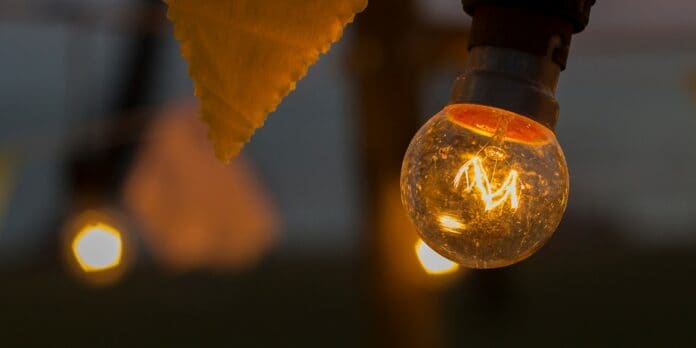Table of Contents
Load reduction is an inconvenient fact of life in Limpopo. If you want more information to regain some control over your energy supply, you’ve come to the right place.
We will explain different ways to check for local schedules and discuss why Eskom uses it in Limpopo. Then, we will go through some essential steps to prepare your home and additional steps to take when the power inevitably goes out.
Let’s dive in.
How Can I Check if There Is Load Reduction in Limpopo?
An easy way to check if it’s happening is to visit myDorpie.com. The site will show you the schedules in Limpopo. Then click on your city or dorpie to find your local schedule.
You can also visit Eskom’s load-shedding schedules website. Select your area to get your local schedule, which includes a detailed outline of the load-shedding stages.
Why Is Load Reduction Used in Limpopo?
Load reduction is similar but not the same as the load shedding that occurs all over South Africa because Eskom’s ageing power grid cannot meet the growing user demand. While both cut power in communities to reduce the strain on the grid, a reduction is an extra outage targeted at specific regions due to too much strain on the infrastructure or when there is a high level of illegal electrical usage on the network.
As a result, electrical outages are even more frequent in Limpopo. However, it helps protect the transformers from overload, which could leave communities without power much longer while the damage is repaired.
How To Prepare for Load Reduction in Limpopo
1. Check the Load Reduction Schedule
Check out Eskom’s load-shedding schedules to find out exactly when your next power outage will occur so that you can prepare.
2. Turn Off and Protect Sensitive Equipment
Before it happens, turn off geysers, appliances, pool pumps, and electronic equipment that could be damaged if a strong surge occurs when the power comes back on.
Installing surge arrester plugs will help protect anything plugged into them. While it’s still a good idea to turn off those appliances, this will help limit the damage if you forget.
You can also use an uninterrupted power supply, like an EcoFlow Portable Power Station connected to your household electricity, to keep devices running when the grid goes down.
3. Prepare for Security System Failures
Since security systems use electricity, they won’t work when the grid is down. Even if it has a battery backup, it might run out before the electricity returns.
Connecting your security to your EcoFlow DELTA 2 + 400W Solar Panel will ensure it always stays on, recharging its large built-in battery when the sun shines.
4. Use Alternative Energy Sources
Since grid shutdowns are so common in South Africa, more people are switching to alternative energy sources.
Installing an EcoFlow Solar Generator is the best way to deal with outages. You can generate electricity when the sun shines and store it in batteries so it’s there when you need it.
You can use a small solar system with a transfer switch to automatically switch to your battery when the grid goes down. Alternatively, you can plug your essential devices into your solar generator when they are needed.
The other option is to go entirely off the grid with EcoFlow DELTA Pro + 400W Solar Panels, an expandable system that can accommodate any home. Then, you never have to worry about outages again.
5. Charge Your Devices
Even if you have backup power, keeping your phones, laptops, chargers, flashlight batteries, and other battery-powered devices fully charged is a good idea to reduce your energy needs when the grid is down.
Steps To Take During Load Reduction in Limpopo
1. Check Your Schedule
Check Eskom’s load-shedding schedules to see how long your electrical will be out so you can ration your backup energy if necessary.
2. Turn On Backup Power Supply
If your solar generator is not tied to your household electricity with an automatic switch, manually turn on your power supply.
3. Unplug Unnecessary Equipment
Unplug all unnecessary equipment so it doesn’t drain extra energy needlessly.
4. Plan and Limit Your Consumption
Plan your energy use and keep it to a minimum, especially if you have a limited backup supply. For instance, you don’t want to run your washing machine only to find out you ran out of power and your frozen goods start thawing. Save your energy for your essentials.
5. Continue Limiting Your Consumption When the Power Returns
When electricity is restored, you risk power congestion if too many people try to draw too much energy at once. So, continue limiting your consumption to reduce the risk of overloading the network.
Frequently Asked Questions
You can find the load reduction schedules for Limpopo online. Go to Eskom’s site and look at their load-shedding schedules for Limpopo, or you can go to MyDorpie to do the same thing.
Final Thoughts
Load reductions in Limpopo are incredibly inconvenient, but they won’t go away anytime soon. Therefore, it’s essential to be prepared.
The best way to prepare is using an EcoFlow Solar Generator. You can get a small system to provide backup power during an outage or a large enough system to go off the grid altogether. Either way, the next time the power goes out, you can keep your essential devices running.
